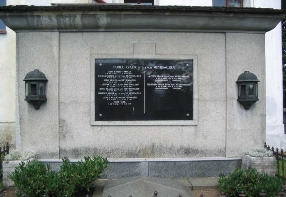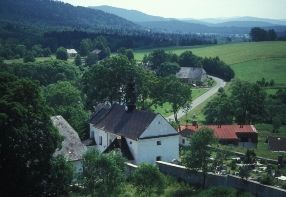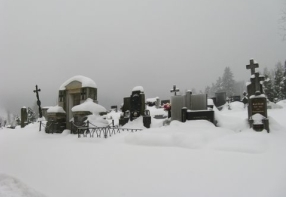Cultural Monument - cemetery and tomb of Vilém Kralik
Wilhelm von Kralik (1806–1877) was born on 17th December 1806 in Kaltenbach, today's Nové Hutě. His family enjoyed the favour of Johann Meyr (Lenora glass-works founder) who provided Wilhelm Kralik with decent education as he already counted on him as his successor. Kralik first studied the school of Vimperk, later also the polytechnic institute in Vienna and thus became practically the only graduate of this school operating in Czech glass-works of the time. After his return from Vienna in 1829, Kralik was accepted to Adolf glass-works and was gradually acquainted with all important matters concerning its operation. After Johann Meyr's death Wilhelm Kralik became together with Josef Taschek the inheritor of the whole glass-works premises built by Meyr. Wilhelm Kralik had a decisive share in development and boom of glass production. He himself even created the whole range of new colour tones of glass, amongst which we should stress out especially the iris glass. Kralik even took out a patent for the technique of irising (glass exposure to metal vapours) in 1876. He contributed significantly to the promotion of Czech glass-making, especially in the period of general economic boom of the Habsburg Monarchy at the turn of 1860's and 1870's. Wilhelm Kralik was awarded for his extraordinary merits with a range of honours and orders, as for instance the "Golden Cross for Merits with Crown", the "Franz Joseph Order", the "Order of the Iron Crown of the 3rd Class" or the Russian "Order of Saint Anne". Only a few days before his death he received his last and most important honour: the Austrian title of knighthood with the noble predicate von Meyrswalden.
The cemetery of Horní Vltavice with its many cast-iron crosses inspired in 1946 Josef Seifert (1901-1986), the winner of Nobel Prize, to write a poem of the same name "The Cemetery in Horní Vltavice". At the cemetery there also is a grave of an unknown woman who took part of the death march and wall shot dead in the age of 26 at the edge of the village just a few days before the end of the World War II. She was buried in the cemetery after exhumation on 6th December 1945. The place offers beautiful views of the Teplá Vltava valley.



